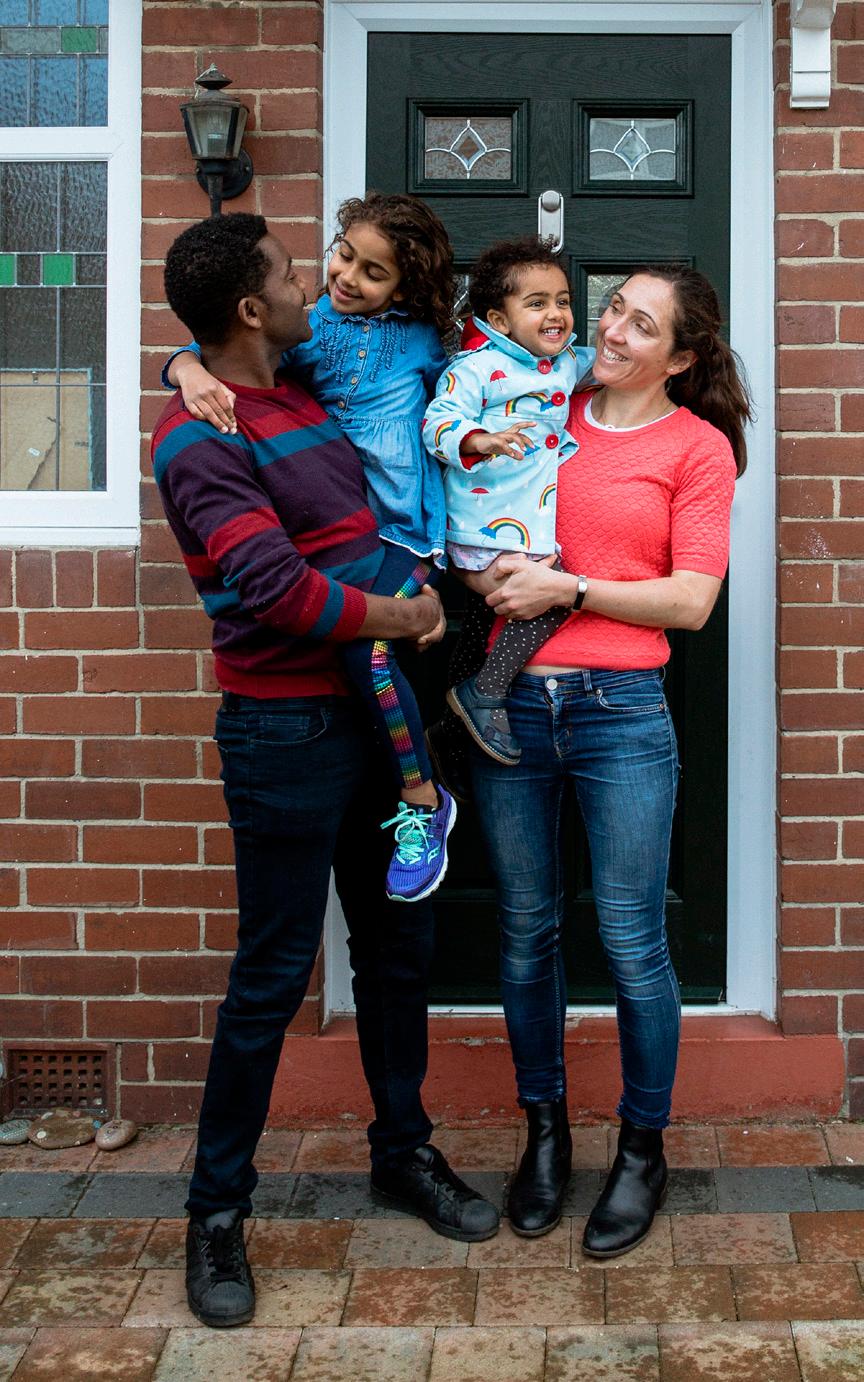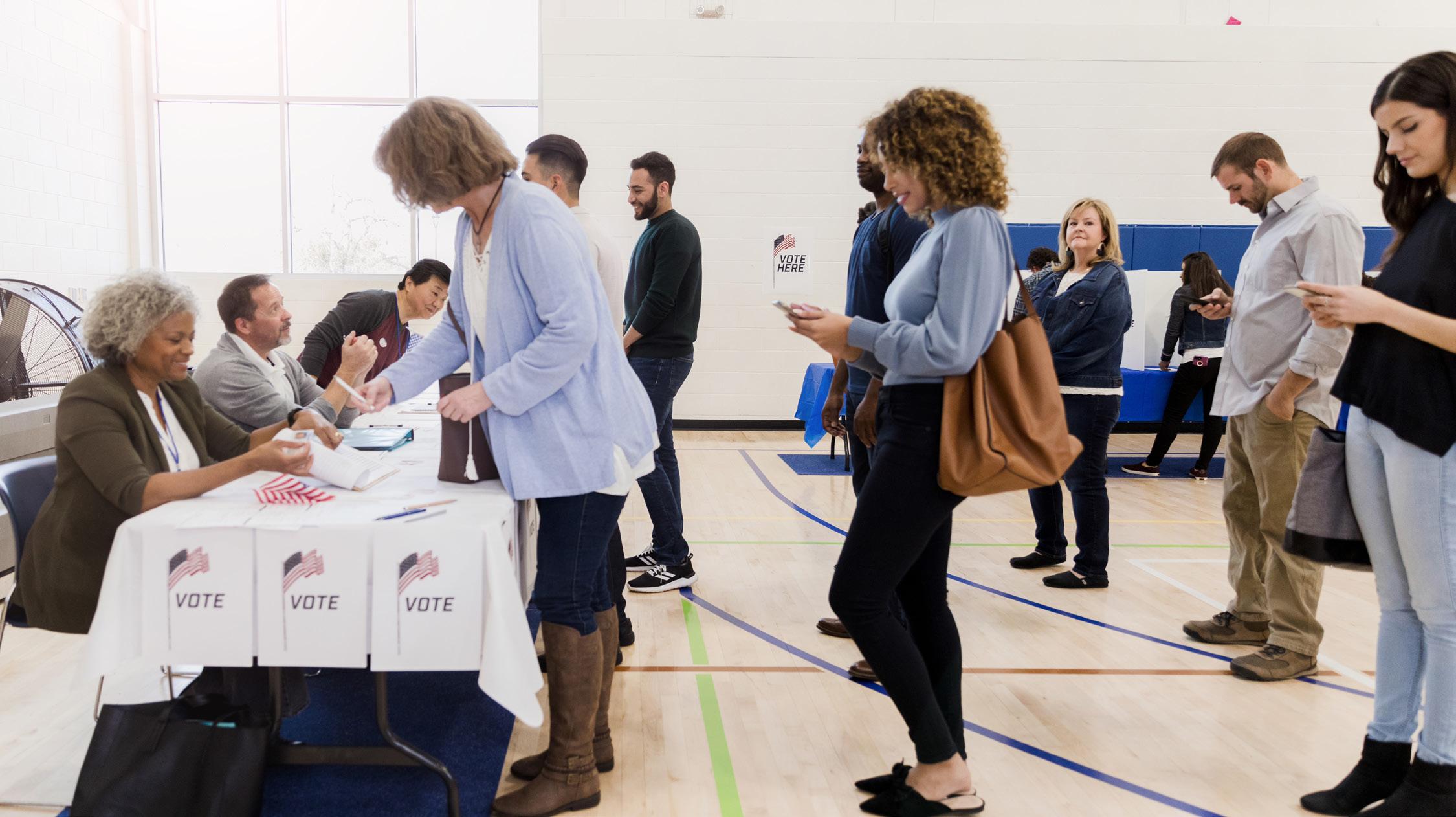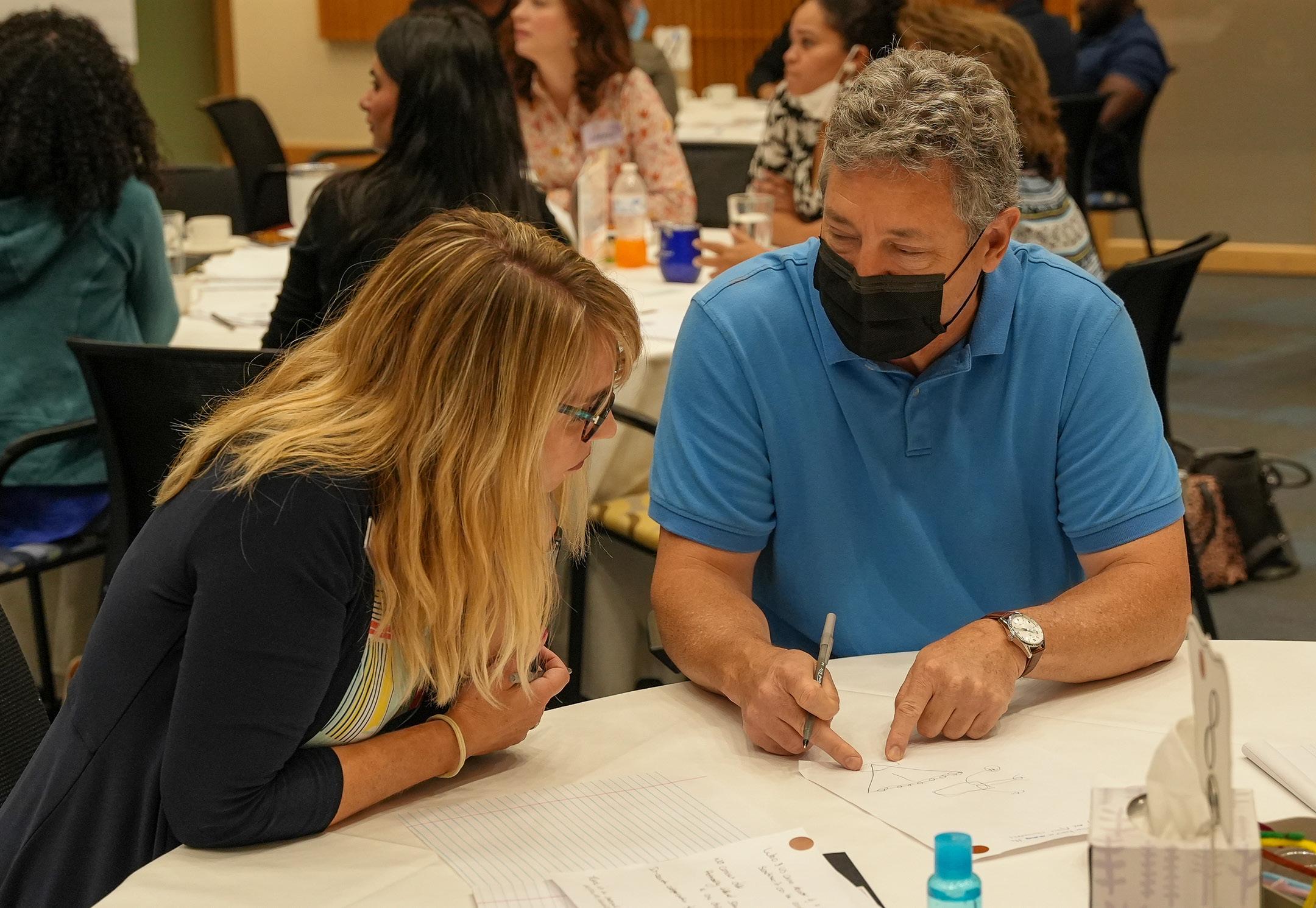COMMUNITY SURVEY FINDINGS
Health Forward Foundation announced a new purpose plan for the organization in early 2022 that focuses on racial equity and economic inclusion. In spring 2022, Health Forward invited community members to respond to a survey and offer their input on the impact the foundation should aim to achieve. The survey contained 15 questions, and community members were invited to answer as many as they desired. More than 100 people shared their thoughts. The following summary highlights the themes of what we heard.

Workforce diversity
We asked respondents how their health care would change if providers more closely resembled them in terms of race, ethnicity, sexual orientation, etc.
Better patient care experience

With providers that better resembled patients, respondents imagined that they would have improved patient care, including improved relationships with those providers, better perspectives of their own health and toward the health care system, more individually tailored care, and culturally competent care that would result in better accuracy in treatment, assessments, and tests.
Improved medical outcomes
Respondents felt this would result in better medical outcomes, including getting quicker diagnoses on medical issues that a culturally different provider may have ignored, in turn improving health outcomes/prognosis, general health, and life span of the patient.
Barriers that keep the workforce from diversifying Responses highlighted distinct deficits, disparities, and barriers in education. They also described concerns with barriers to entering the field, such as the cost, competitiveness and often social capital needed for medical school, as well as the view that, overall, the medical field is not seen as welcoming to diversity. “General lack of opportunity” was a frequent response.
“I believe that testing that requires different considerations for various people of color would be performed correctly the first time so that the result is accurate.”
“A public educational system that doesn’t prepare students well enough.”
“Lack of family/friend role models who work in these fields at higher levels than the lowest paid workers.”
“Lack of funding for post-secondary education.”
Whole-person care
We asked respondents what it would look like if they received health care that addressed all their needs (mental, physical, oral, social, spiritual, etc.).
Respondents anticipated they would feel better about their health care experience and would see reduced stigma and trauma. They also suggested they would avoid missing more appointments.

In addition, respondents anticipated that:
• Services would be more comprehensive and fewer errors would occur because health evaluations would be more in depth, synchronized and more time would be taken in appointments
• The health care system would be more affordable, seamless, prevention focused, culturally sound/competent, inclusive, and accessible
• Health care would become more patient focused
• There would be greater accessibility to mental health services
Respondents shared that existing barriers to whole-person care were health care costs, complexity of the system, and the currently fragmented approach to care.
“Integrated health care with clear pathways of access would reduce anxiety and fears, result in more proactive and supported preventive strategies, stronger community connections overall.”
Homeownership
When asked about benefits that would occur if homeownership rates increased, respondents described improvements for both people and communities. Individual benefits included increased financial independence, increased generational wealth, and improved quality of life. Community benefits noted were neighborhoods that were more stable, safe, clean, and attractive. Community benefits also included a greater sense of community pride and unity among community members, improved social networks, and an increased sense of belonging.
Respondents expressed a major issue creating barriers for homebuyers was a lack of financial resources, money, and assets. Housing market barriers were also noted including a lack of affordable houses, high interest rates and property taxes. A final theme focused on challenges with navigating the process due to both lack of understanding or connections that could assist in that process.
Some respondents expressed reservations that Health Forward was now focusing on homeownership and noted there were other strategies that could be tied to building wealth.

“Homeownership is the key to providing financial stability to many families. Also, those communities and schools would have a resident base that would be more consistent and allow for more engagement with schools and neighborhood issues.
Current mobility of low-income families works against sustained involvement with schools and neighborhood issues.”
Digital equity
We asked respondents about benefits from increased access to, and understanding of, the internet.
Knowledge and educational benefits
Improvement in individual knowledge regarding the use of the internet, and devices related to it, were seen as an outcome. With better access, technology literacy would improve, reducing issues of a “digital divide” between communities.

Business benefits
Employment levels should increase as businesses should be able to hire more employees. They can also perform more HR related duties online, improving the onboarding process. Businesses should be able to network and operate more efficiently. Employers can utilize employees more by expanding work from home opportunities. Improved access to the internet should mean more entrepreneurs are coming into the business field. There also should be structural changes as there should be an increase in diversity and more equity in the job market.
“Increased financial literacy, access to quality jobs, creative and artistic innovation, and better ability to manage day-today items that have largely moved to a digital space.”
Social influencers of health improvement for people and communities
Responses and remarks noted that there should be a residual effect in improving social factors that influence health.
Some respondents interjected a note of caution, noting that not all results of increased digital access, especially social media, were positive and that it could be a source of misinformation.
When we asked respondents what barriers limit people from having reliable, affordable, high-quality internet access, they acknowledged challenges at both individual and systemic levels.
Consumer- or community-related barriers
Consumer related barriers included the cost of internet services, lack of affordability for devices, and poor credit histories. Unemployment, underemployment, housing insecurity, and employment that doesn’t provide livable wages are also restricting access. It was noted that those who frequently move may have problems securing consistent internet service.
Internet company-related barriers
Respondents noted factors within internet companies such as limited ability to cover service areas and geographical regions — like rural areas, lack of equipment available, competitive business practices, corporate greed, and price scheming.

Civic engagement
We asked respondents to describe how they believe increased civic engagement from individuals would improve communities.
Improvements in the government realm (political actors/policy/ governing structures)
With increased civic engagement from individuals, respondents felt political actors would be more honest, accountable, and transparent with resources and decision-making. Stakeholders would also be more informed. Diversity of office holders would increase and better reflect the diversity of the community. In turn, policies would be informed by the community and better reflect the people who live in it.
Gains in the community
Community members will feel more empowered, become more mobilized, and increasingly more involved in, and knowledgeable about, democratic processes over time. Improvements in community relationships, pride, hope, and unity about the future would also occur.
However, some respondents felt that, even with improved civic engagement, structural/institutional barriers like racism, other systemic injustices, and the corruption of current politicians would keep too much change from occuring and did not see civic engagement as an effective tool for change.

What barriers limit people from fully participating in democratic/civic processes?

• Resource barriers such as time and language issues
• Policy barriers (examples: having a criminal record, or lacking an ID)
• Sense of disconnect with politics and political actors who do not represent their culture, and distrust of those politicians who break promises
• Lack of knowledge regarding the process
Small community-based nonprofits
We asked respondents to tell us what would be different if we successfully increased the capacity of small, community-based nonprofits (SCBNP) and their leaders. We heard that this would lead to:
• More effective organizations, including increased innovation
• An increase in the ability of organizations to remedy structural and institutional issues because there won’t be a need to just “put out fires” in the community
• Better services, as SCBNP are more in sync with community solutions
A significant number of respondents did not believe there would be much change if SCBNP had more capacity. Instead, to influence the sector, more structural approaches were needed.
Racial equity and economic inclusion
Our survey also asked about narrative framing — specifically if we need to help drive change in the way our region talks about racial equity and economic inclusion. Overwhelmingly, respondents felt that we did. They also provided specific feedback on how to do that.
Racial equity
Regarding racial equity, respondents expressed there needs to be improvement regarding our shared understanding of it. People shared
that they felt this is especially true at the current moment given the current focus and hostility toward this issue, which has created resistance to conversations about acknowledging racial inequities. This has resulted in a host of myths that need to be addressed and debunked.
Improve dialogue, education, and training regarding racial equity
Respondents expressed a need for better and more robust and ongoing conversations regarding this. This includes changing how we talk about racial equity with less toxicity, less fear, less politics, and more diversity in conversations. Respondents also expressed that racial equity needs to be taught as a normal part of school education programs and training for adults.

Focus on other important social maladies/inequity
Respondents expressed that it was important that other issues be emphasized like social influencers of health, including poverty and housing. Respondents also cautioned that other areas where we see inequities, like in health, economic, and workforce issues cannot be separated from racial equity. Also, structural racism was referenced as important when thinking about and discussing racial equity, as well as the fact that the region needs to discuss and confront redlining practices.

Economic inclusion
The themes were somewhat similar to racial equity. Specifically respondents suggested:
• A need to improve definitions and develop a shared understanding of what economic inclusion means
• Greater diversity among people having the conversations regarding economic inclusion
• The root causes of economic exclusion need to be highlighted
Additional feedback
We offered respondents the opportunity to share any other thoughts they had about Health Forward’s new work and direction.

The most prevalent theme was gratitude and excitement for Health Forward’s continued work. There were also questions and concerns about new directions in funding. Some were confused about the new focus, and some were concerned or anxious that quick decisions would be made that would give nonprofits little time to adjust.
NEXT STEPS
These results are an additional data point to reference as Health Forward continues to develop strategies and initiatives.
We appreciate all who took time to share their feedback and look forward to hearing more from our communities as we implement our purpose plan.
